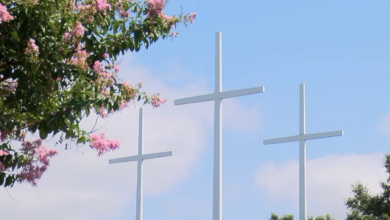Hajj pilgrimage commences in Saudi Arabia after years of Covid restrictions

By Suliman al Asad
Riyadh, Jun 26 (EFE).- Nearly two million Muslims from across the world gathered at Mecca in Saudi Arabia braving high temperatures as the annual Hajj pilgrimage kicked off on Monday, marking the first time in three years without restrictions imposed during the coronavirus outbreak.
Every year, the Saudi authorities go all out to make all necessary arrangements for the pilgrims, utilizing the experience from previous years, and prevent major tragedies during the season, such as the deadly stampede that took place in 2015.
The security forces head for the Hajj, Khaled Al Harb, told local media that “all potential dangers” have been taken into account for the current season.
However, the most serious threat is likely to be caused by the heat as temperatures in Mecca are expected to remain between 33-44 degrees Celsius this week.
This year, Saudi Arabia expects the total number of pilgrims to return to pre-pandemic levels, reaching some 2.3 million faithful from some 160 countries.
Some 2.48 million pilgrims took part in the Hajj in 2019, of which 1.85 million were from Saudi Arabia. However, the entry of pilgrims was severely restricted in the following three years due to the pandemic.
Minister of Hajj and Umrah Tawfiq Al Rabiah said they have set up 32 hospitals and 140 health centers, with about 32,000 professionals, and more than 6,100 beds, in addition to 761 for intensive care.
The Transport Ministry, on its part, said it is using, for the first time, virtual reality glasses to monitor the compliance of transport vehicles, document and monitor violations and regulate traffic.
The President of the General Presidency for the Affairs of the Grand Holy Mosque in Mecca and the Prophet’s Holy Mosque in Medina, Abdulrahman Al-Sudais, said they had made the most extensive preparations in history, having assigned 14,000 employees and 8,000 volunteers, as well as the government’s staff members, and employed 4,000 workers to wash the Grand Mosque 10 times a day.
Some 9,000 vehicles have also been kept aside to assist the elderly and the handicapped. Translation, guidance and public response facilities are provided in 51 languages.
The pilgrimage includes several days of rituals at Muslim holy sites in and around the city of Mecca, home to the Kaaba, a cube-shaped structure considered the most sacred place and a powerful symbol of unity and monotheism in Islam.
The “Hajj,” one of the pillars of Islam, includes counterclockwise circumambulation of the Kaaba.
The pilgrimage is obligatory at least once in the lifetime of every Muslim whose health and resources allow it.
The journey includes visits to the sacred sites of Mecca, where the Prophet Muhammad and the religion he propagated more than 1,400 years ago were born, and to the city of Medina, located about 400 km to the north, where the mosque in which he is buried is located.
The pilgrims also visit the holy places outside Mecca—Jabal al-Raḥmah, Muzdalifah, and Mina—and carry out animal sacrifices in commemoration of Prophet Ibrahim’s sacrifice.
Muslims believe the pilgrimage wipes away their sins, brings them closer to Allah, and highlights Muslim unity. EFE
sa-ar-ijm-ssk/sc





